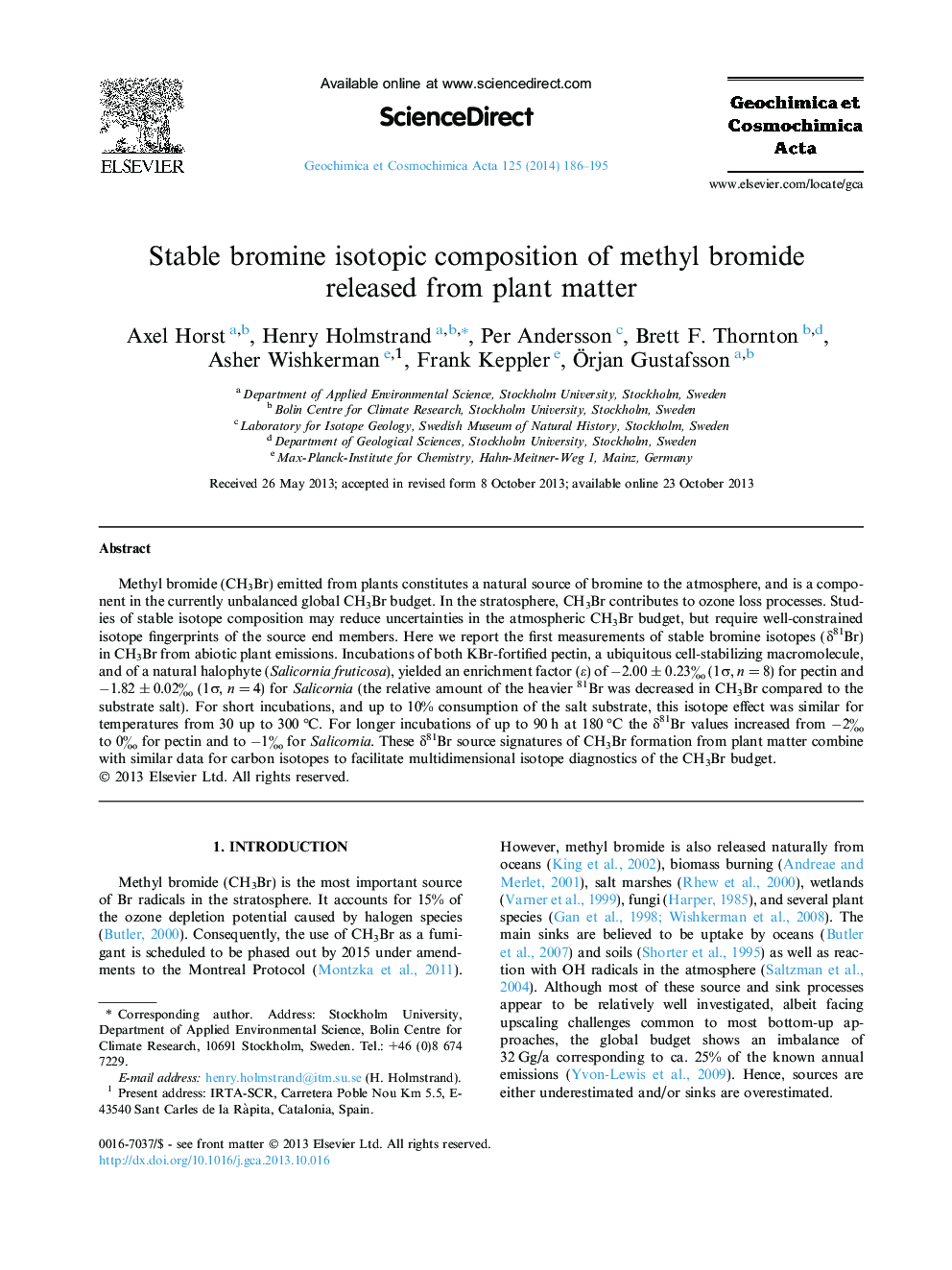| Article ID | Journal | Published Year | Pages | File Type |
|---|---|---|---|---|
| 6438670 | Geochimica et Cosmochimica Acta | 2014 | 10 Pages |
Abstract
Methyl bromide (CH3Br) emitted from plants constitutes a natural source of bromine to the atmosphere, and is a component in the currently unbalanced global CH3Br budget. In the stratosphere, CH3Br contributes to ozone loss processes. Studies of stable isotope composition may reduce uncertainties in the atmospheric CH3Br budget, but require well-constrained isotope fingerprints of the source end members. Here we report the first measurements of stable bromine isotopes (δ81Br) in CH3Br from abiotic plant emissions. Incubations of both KBr-fortified pectin, a ubiquitous cell-stabilizing macromolecule, and of a natural halophyte (Salicornia fruticosa), yielded an enrichment factor (ε) of â2.00 ± 0.23â° (1Ï, n = 8) for pectin and â1.82 ± 0.02â° (1Ï, n = 4) for Salicornia (the relative amount of the heavier 81Br was decreased in CH3Br compared to the substrate salt). For short incubations, and up to 10% consumption of the salt substrate, this isotope effect was similar for temperatures from 30 up to 300 °C. For longer incubations of up to 90 h at 180 °C the δ81Br values increased from â2â° to 0â° for pectin and to â1â° for Salicornia. These δ81Br source signatures of CH3Br formation from plant matter combine with similar data for carbon isotopes to facilitate multidimensional isotope diagnostics of the CH3Br budget.
Related Topics
Physical Sciences and Engineering
Earth and Planetary Sciences
Geochemistry and Petrology
Authors
Axel Horst, Henry Holmstrand, Per Andersson, Brett F. Thornton, Asher Wishkerman, Frank Keppler, Ãrjan Gustafsson,
